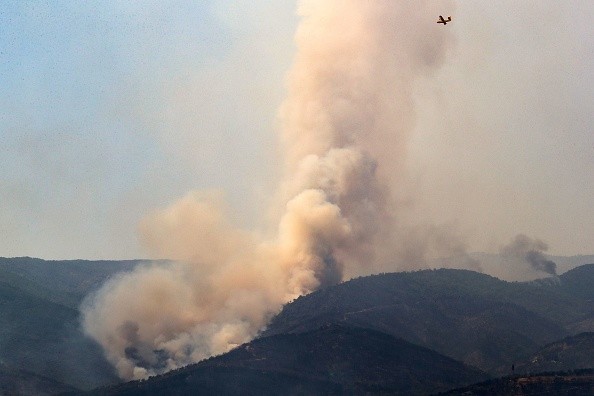For the second year without a break, massive wildfires are producing clouds of smoke. This smoke is big enough to create its own weather, cover the whole continents, and change the color of distant skies to orange or grey.

Wildfire Smoke
Smoke is swelling from wildfires in the western US, Canada, Spain, Turkey, Algeria, Greece, Italy, and Siberia. This has become so much to the extent that astronauts on the space station can spot it.
In California and Oregon the wildfires have made the skies dark and also prompted air-quality warnings in cities like New York City and Boston, the same as last summer. For now, the Siberian fires have sent clouds of ash and smoke to the North Pole, close to 2,000 miles away and then to Greenland and Canada.
Every time an enormous fire burns, smoke from the fire can go high in the atmosphere, and then winds get hold of it and convey it for thousands of miles until it comes into contact with a weather system that moves it back towards the ground.
That's when it causes a health risk. Most individuals see wildfires as a local issue - a risk to residents of Greece or California, but personally not for them. That's not correct, as per Jesse Berman, an environmental epidemiologist.
Climate Change
Berman told Insider that "every one of these wildfire events is an opportunity for that smoke to travel long distances and affect not only the people nearby, but also those very far away.People who live in areas that have relatively good air quality are going to be all of a sudden subjected to levels of pollution that are many times higher than what's normally seen, and at levels that are very harmful to health."
According to Berman, these mega-clouds of smoke that travel all over the world may turn into a regular, yearly occurrence if not several times every single year.
It is expected that climate change will lead to more often, bigger, and more serious wildfires in decades to come. Through 2050, "fire weather" will likely increase in Central America, North America, parts of South America, southern Africa, Australia, north Asia, the Mediterranean, and New Zealand, a new report from the UN's Intergovernmental Panel on Climate Change warns.
That suggests more days where conditions are dry, warm, and windy enough to prompt and continue wildfires.

PM2.5
Anywhere it goes, wildfire smoke fills the atmosphere with tiny particles from the things that have burned and the consequence becomes chemical reactions.
Referred to as PM2.5, these particles measure not over 2.5 micrometers across (that's approximately 30 times smaller than the hair in humans). Allowing them to enter deep into the lungs and make their way into the bloodstream.
When one inhales these particles they can harm the lining of the human lungs and trigger inflammation.
Related Article: Wildfire Smokes Reached North Pole in a Historic First, Showing How Bad the Crisis Got
For more news, updates about wildfire smoke and similar topics don't forget to follow Nature World News!
© 2025 NatureWorldNews.com All rights reserved. Do not reproduce without permission.





